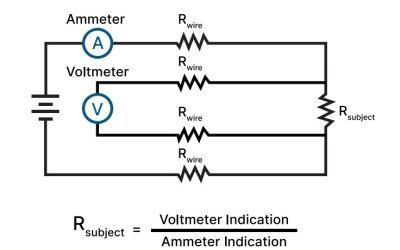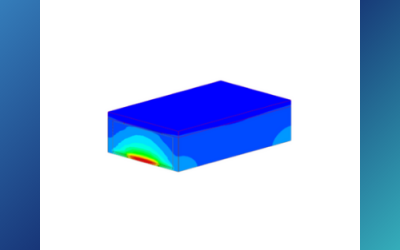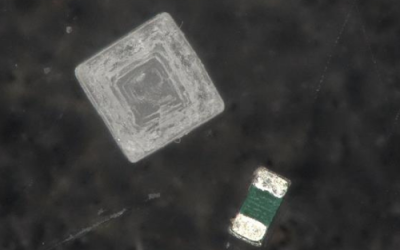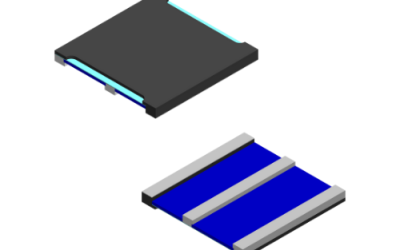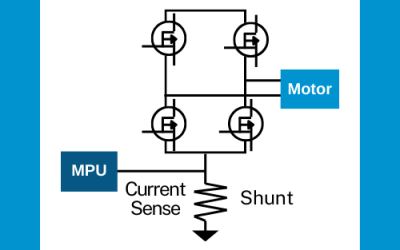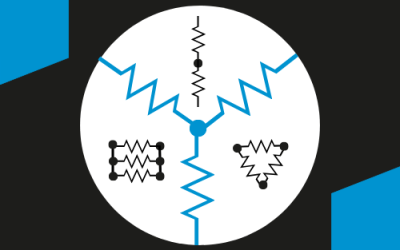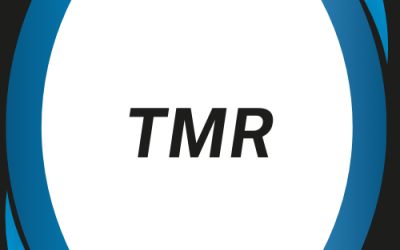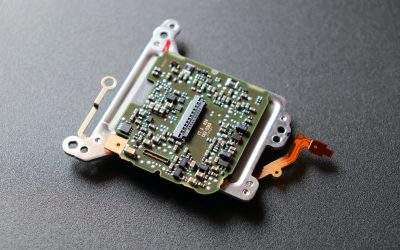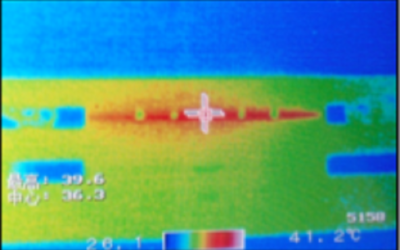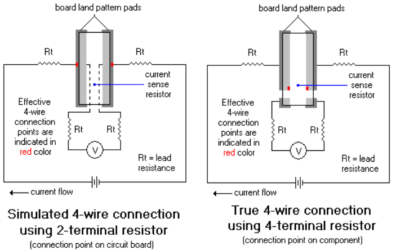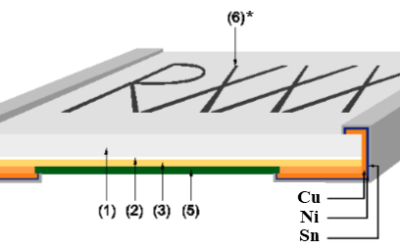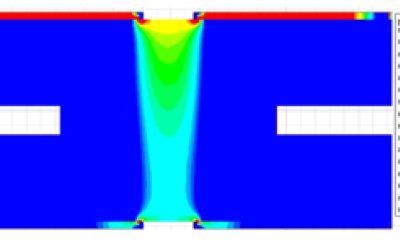Thin Film Technology Corp. has conducted a detailed study of current flow within the CSR circuit that demonstrates the advantages and disadvantages of various CSR topologies. This paper will deliver information that allows electronics designers to create low ohmic current sense circuitry that is more efficient and more accurate.
Magic Resistor Topside Cooling – Product Resume
As electronic devices become smaller and more complex, the need for a chip resistor to provide high power handling while maintaining its thermal integrity has become increasingly necessary.
Jumper Product Resume
TFT’s Jumperz line offers a diverse range of options suited for various applications, all with high volume capabilities to meet demanding needs.
Voltage Sensing 3-Terminal Resistor
The 3-Terminal voltage sensing resistor is a new and exciting product in development from TFT.
Current Sensing Resistor
Our current sensing resistors utilize a then metal foil or plate as the resistive element, providing numerous advantages such as exceptional precision, low temperature coefficient of resistance (TCR), and outstanding stability.
Current Sensing Shunt
TFT Current Sensing Shunts (CSS) are higher power components that will provide the same precision and quality as our existing 2T and 4T current sensing resistors.
Embedded Module Component
TFT’s Embedded Module Components represent a groundbreaking advancement in the realm of RF (Radio Frequency) applications, outperforming conventional methods by providing a notable boost in performance while minimizing signal loss.
Fuse Product Resume
TFT’s chip fuses are manufactured using a process similar to Current Sensing Resistors (CSRs). These components have our patented Thin Film metal foil technology printed directly on the ceramic substrate which is then trimmed to the correct current or resistance rating.
High Frequency Product Resume
Our product lineup boasts a diverse array of essential components including attenuators, delay lines, low-pass absorptive edge filters, and mm-Wave bandpass filters. Each component is engineered with precision and expertise, delivering unparalleled reliability and functionality to meet the demands of today’s cutting-edge applications.
Resistor Networks Product Resume
Understanding the unique requirements of our diverse clientele, TFT offers custom resistor networks. Tailored to fit the specific designs of our customers, these solutions demonstrate our commitment to flexibility and customer-centric innovation.
Thin Film Resistor Product Resume
TFT’s Thin Film Resistors offer a host of advantages, encompassing high precision, a low temperature coefficient of resistance (TCR), and enduring stability. Noteworthy for their compact size, they enable space-efficient circuit designs while maintaining characteristics of low noise and minimal power consumption.
TMR Product Resume
Tunneling Magneto Resistive (TMR) technology relies on the quantum mechanical phenomenon of electron tunneling through a thin insulating barrier between two ferromagnetic layers.
Automotive Product Profile
TFT offers a comprehensive range of automotive-grade products, boasting cutting-edge technology and precision engineering, designed to meet the highest industry standards.
Sulfur Resistance Product Profile
TFT provides an innovative suite of sulfur-resistant technology solutions, characterized by advanced features and meticulous engineering, crafted to surpass the most stringent industry benchmarks.
CSR Product Profile
TFT’s specializes in current sensing technology, delivering unparalleled precision and reliability in monitoring electrical currents, ensuring optimal performance across a spectrum of applications.
ESL and Parasitic Inductance Resistor Selection Guide
It is important when designing a circuit to know how to select the best component for your application. The team at Thin Film Technology (TFT) can guide you in this journey. The article below will discuss what is parasitic inductance and ESL, other factors to understand when evaluating the parasitic inductance of a resistor, and the recommended components to begin your search.
PCB Design Error Contributions in Current Sense Resistors
Having a high reliable Current Sense Resistor (CSR) component in your design is always a priority for a successful output. However, the value of this component will be diminished if you do not have a good optimization of your PCB. The more you minimize your design error contributions, the more superior performance you will achieve. This paper will discuss some of the factors to consider when designing a PCB.
Current Sensing – 2-Terminal VS. 4-Terminal
This paper will review the differences between 2-terminal current sensing resistors mounted to a 4-wire land pattern and 4-terminal current sensing resistors mounted to a 4-wire land pattern. It will then explain why, even with the slightly higher price, 4-terminal resistors are the better choice.
TCR in Ultra-High Precision Current Sense Resistors
The purpose of this paper is to show the significance of Temperature Coefficient of a Resistance (TCR) in ultra-high precision current sense resistors and how it can fundamentally change an electrical circuit functionality.
Understanding the Kelvin Method of Measuring Resistance
The purpose of this paper is to show the significance of Temperature Coefficient of a Resistance (TCR) in ultra-high precision current sense resistors and how it can fundamentally change an electrical circuit functionality.
Measuring the Effects of Current Crowding on PCBs with TFT 4T CSRs
Four-terminal resistors contribute to measurement accuracy, and various designs exist for their construction. Resistors such as Thin Film Technology Corp’s (TFT) CPA series perform better in high power applications due to its high heat dissipation capabilities. A study by TFT’s engineers investigated the factors that contribute to variations in resistance following the mounting of the component to a PCB.
Understanding the Distinction: Current Sensing Shunts vs. Shunts
In the realm of electrical engineering, the terms “shunts” and “current sensing shunts” are often used interchangeably, leading to confusion. However, it’s essential to recognize that a current sensing shunt serves a specific purpose within the broader category of shunts. Let’s delve into the distinction and shed light on the significance of current sensing shunts in modern electrical systems.

